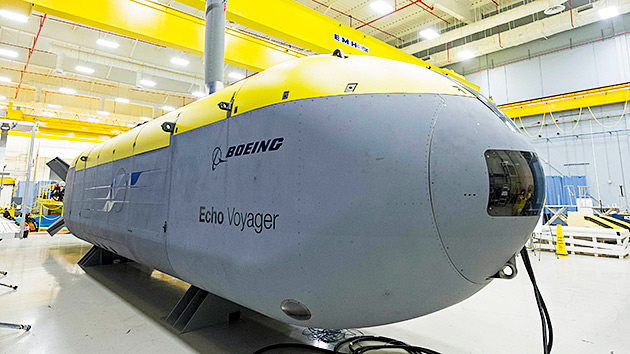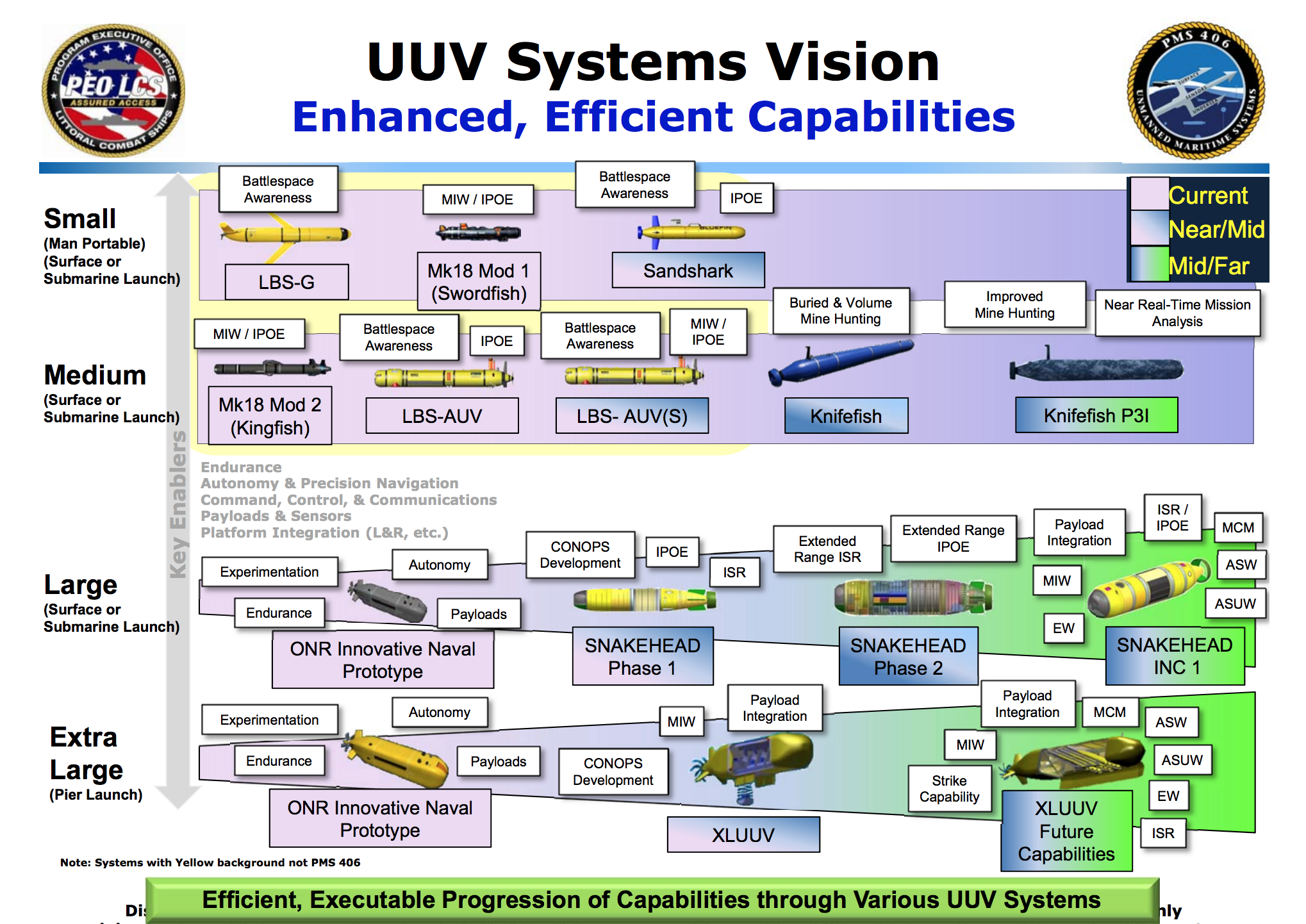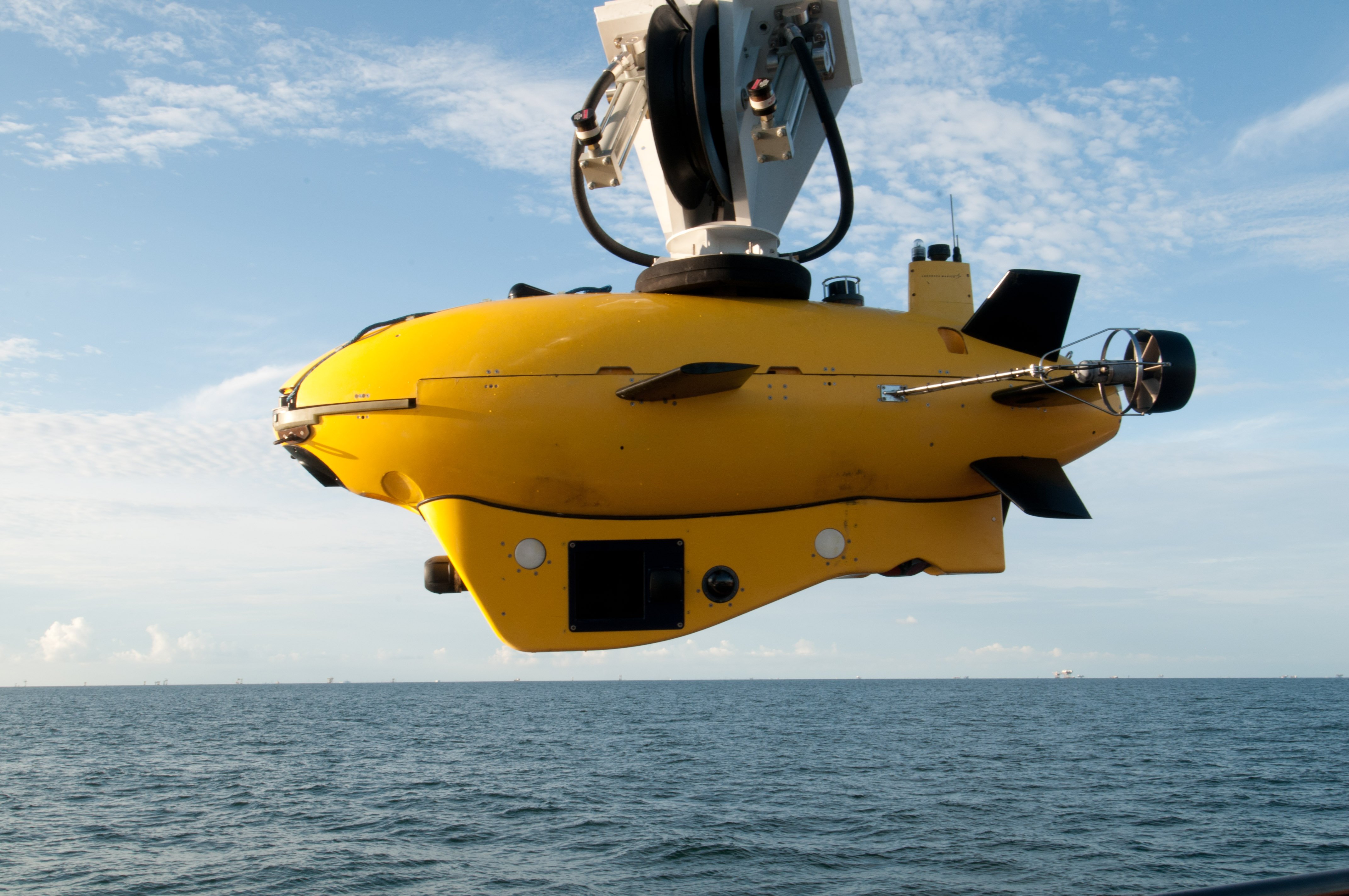
The Navy selected Boeing and Lockheed Martin to pursue the Extra Large Unmanned Underwater Vehicle (XLUUV) program, which will test the Navy’s ability to manage a rapid-acquisition project and the Navy-industry team’s ability to develop and integrate an unmanned system that operates completely independently of manned ships.
Lockheed Martin was awarded $43.2 million and Boeing $42.3 million for the design phase of the Orca XLUUV system and delivery of a technical data package
Lance Towers, Boeing’s director of Advanced Technology Programs for Autonomous Systems, told USNI News that the extra-large UUV concept will ultimately cost the Navy less money than trying to conduct similar missions with a smaller unmanned vehicle due to the XLUUV operating completely independently of a manned ship or submarine. Smaller “tactical” UUVs not only require a manned ship to be nearby to serve as a host, but their operations can also be limited by bad weather or other factors that affect that host ship.
“If you’re trying to do something like collect data on the ocean floor, taking a surface ship or a submarine and towing something to capture that data is very very expensive – you’ve got a lot of personnel onboard, things of that nature,” he said.
“Having something that’s autonomous to go off and do something like the mow-the-lawn pattern collecting that data is far more cost-effective, but the only way to make it cost-effective is to make it operate on its own,” without the aid of a host ship.
Boeing’s XLUUV entry will be based on its Echo Voyager, the company’s newest and largest UUV in its Echo family of systems. Towers said some alterations would need to be made to meet Navy requirements, but he said Echo Voyager has already proven itself in at-sea testing with Boeing’s own sensor payloads.
“Echo Voyager is basically an unmanned diesel-electric submarine: it uses a generator to recharge batteries when it’s on the surface, and when submerged it runs off batteries. It’s basically an un-personed submarine,” Towers said.
“It has the ability to go thousands of nautical miles, versus a tactical one may give you 100 to 200 nautical miles – so if you really want something that has the legs to be able to go the distance” and the capacity to carry the right payloads, Towers said the XLUUV program was the way to go for the Navy.
The Navy is at the same time pursuing a Large Diameter UUV (LDUUV) – also as a rapid-acquisition program – that would be launched from a Virginia-class attack submarine or from surface ships, whereas XLUUV would be a pier-launched platform. Though both could conduct some similar missions – including intelligence, surveillance and reconnaissance (ISR) – the LDUUV would only be able to stray so far from its host. The Navy views LDUUV as a way to extend the reach of its SSNs and surface ships, whereas XLUUV would be an independent operator that would surface occasionally to provide data to the fleet as a whole.
According to a Navy UUV systems vision chart, XLUUV will first focus on payload integration work and mine warfare missions, but it could eventually contribute to mine countermeasures, anti-submarine warfare, anti-surface warfare, electronic warfare and strike capability, as mid- to far-term payload additions. LDUUV will begin as an ISR platform but could eventually take on those same missions.

The two XLUUV design contracts cover a 15-month work period, with a critical design review set for December 2018 and a downselect to one contractor taking place based on the CDR. Towers said the rapid timeline of this project was certainly a departure from other programs, which sometimes have design phases that span two or three years or more – but he said close communication with the Navy would be key to ensuring everyone was on the same page about not only the written technical specifications but also the Navy’s overall intent for the program, which can sometimes get lost in pages of technical documentation.
As the XLUUV design phase moves on, Towers said Boeing would send its Echo Voyager back out to sea in early 2018 for a second set of sea trials, to continue to prove that the vessel holds up to the harsh underwater environment – significant pressure changes throughout the water column and corrosive salt water among them – and that it can take on whatever payloads potential customers might need.
“We’re making it so that all the customers can use the application of Echo Voyager without having to spend a lot of money to participate,” he said, noting that Boeing has worked closely with potential customers to make sure the vehicle meets their payloads’ power, space, weight and other needs.
“If you make it very difficult to get someone’s payload into a platform, that makes it kind of hard for them to want to use it as an approach.”
The Navy’s specifications for its standard payload interface are outlined in the XLUUV’s statement of work, Towers said.

Lockheed Martin, the second competitor in the XLUUV program, told USNI News in a written statement that its bid was based on its Marlin Autonomous Underwater Vehicle and informed by “more than 40 years of experience developing and delivering advanced undersea systems and full ocean depth technologies,” including 28 manned submersibles and more than 150 remotely-operated vehicles.





